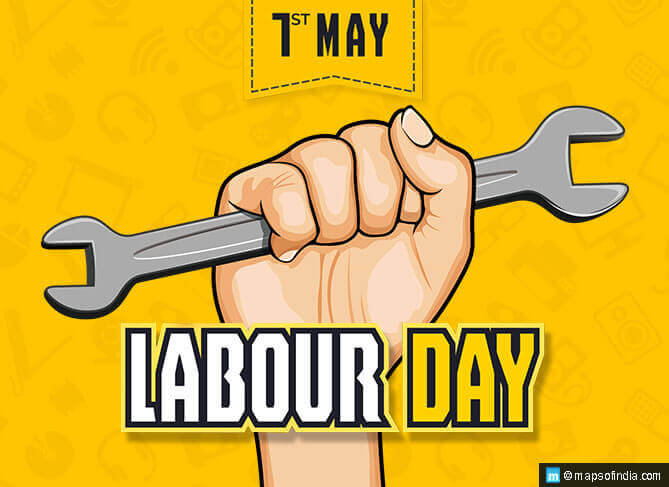
International Workers’ Day
International Workers’ Day or Labour Day is a global celebration of the working class, the labourers, and the tradesmen whose efforts form the very foundation of our social and economic progress. In many European countries and erstwhile colonies of European nations, Labour Day is celebrated on May 1 of each year. Other countries such as the US, however, commemorate the Labour Day on the first Monday of September each year. In India, we start the month of May with a dedication to the labourers and workers who have been the force behind the industrial development of our nation.
History of Labour Day
One of the significant events in the history of Labour Day is a labour demonstration that took place in Chicago’s Haymarket Square on May 4, 1886. It started as a peaceful demonstration seeking an 8 hour workday for the labourers but soon got out of hand. An unidentified person hurled a bomb at the police, killing about 11 people. Of the eight convicted, seven turned out to be innocent. The incident was also followed by large-scale demands for 8-hour workdays and better conditions for workers in many parts of the world.
It was later in 1904 that the 1904 International Socialist Conference in Amsterdam voiced a call for demonstrations by trade unions and socialist parties of all countries on May 1 each year “for the legal establishment of the 8-hour day, for the class demands of the proletariat, and for universal peace”.
Labour Day in India
May 1, Labour Day, is a public holiday in India. “Shramik Diwas” celebrations, demonstrations, and camps are organised in many parts of the country. The very first Labour Day celebration in the country was held in Madras (Chennai), on May 1, 1923. Malayapuram Singaravelu Chettiar, one of the founders of the Communist Party of India and a champion of workers’ rights, launched the Labour Kisan Party of Hindustan on this day. He arranged for two workers’ meetings to be held in Madras on that day – one was held opposite the Madras High Court on the Marina beach, and the other was held at Triplicane. The red flag that popularly represents the working class was raised for the first time in India on this day. The Triumph of Labour Statue (commonly called Labour Statue) stands tall on the Marina Beach in Chennai – a grand reminder of the first Labour Day celebration in the country.
Why Labour Day is celebrated?
Appreciation of labourers and workers goes far beyond participating in Labour Day celebrations. With a vision as grand as ours – of turning the country into a global manufacturing hub – the labour force must be accorded its rightful place in our hearts and society.
The year 2012 estimates suggest that there are over 487 million workers in the country. Recent news reports, however, reveal an alarming trend. To bypass tough labour laws companies are increasingly hiring contractual employees. Lack of security, seasonal employment, poor pay and living standards, child labour – these and several other challenges plague the working class of India. Labour Day is a reminder for us that these are the real architects of our society, that they deserve their due respect.



